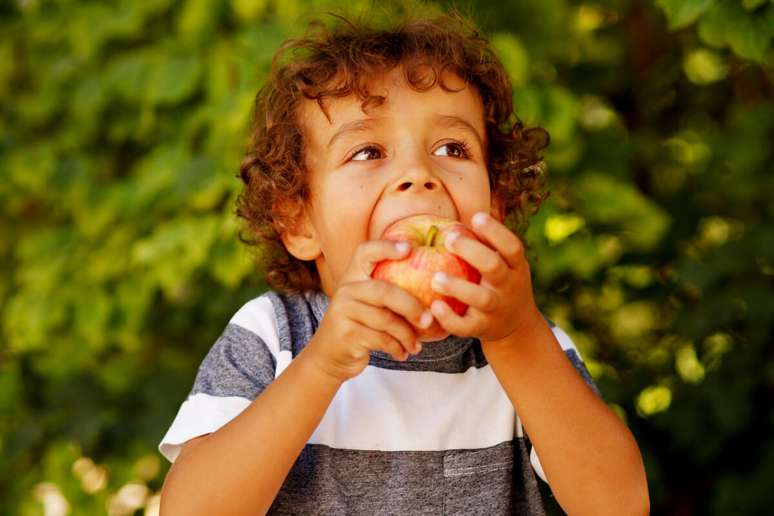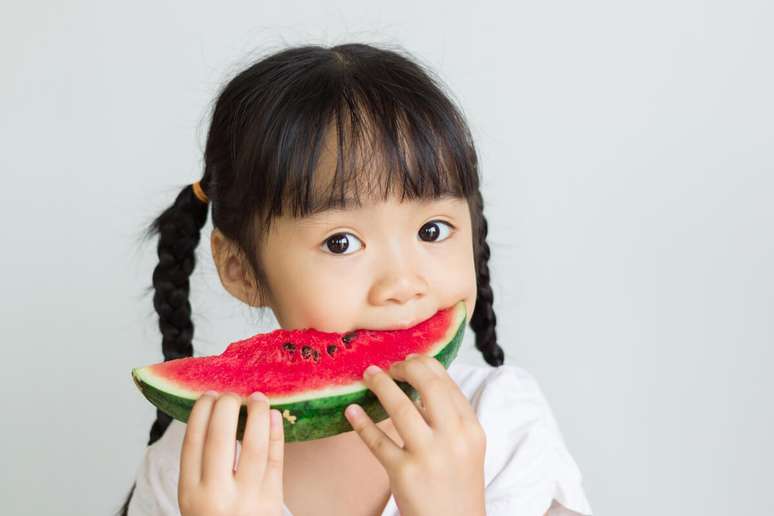In addition to the prevention of chronic diseases, fruits are important for child development
When consumed regularly, some foods can help prevent future health problems such as diabetes, high blood pressure and cardiovascular disease. Furthermore, some of them are able to improve mental and physical performance, promote growth and development and strengthen resistance to disease, through the influence on the immune system, among many other benefits.
html[data-range=”xlarge”] figure image img.img-5ffb0bff07987c3c0688c7540fa285b6pkp2iadi { width: 774px; height: 516px; }HTML[data-range=”large”] figure image img.img-5ffb0bff07987c3c0688c7540fa285b6pkp2iadi { width: 548px; height: 365px; }HTML[data-range=”small”] figure figure img.img-5ffb0bff07987c3c0688c7540fa285b6pkp2iadi, html[data-range=”medium”] figure image img.img-5ffb0bff07987c3c0688c7540fa285b6pkp2iadi { width: 564px; height: 376px; }
“The fruits contain substances with antioxidant properties, such as flavonoids, which participate in the maintenance of good blood circulation, thus having antihypertensive, hypocholesterolemic and antiplatelet activity, consequently protecting against the development of cardiovascular diseases associated with hypertension, high cholesterol and diabetes“, warns nutritionist Flávia da Silva Santos.
Again according to the professional, the consumption of fruit from childhood, “associated with eating habits and healthy lifestyle, would be related to the decrease in the incidence of chronic non-communicable diseases at an early age and their exacerbation in young adults”.
Other benefits offered by fruit
OR fruit consumption it also guarantees the obtainment of vitamins, minerals, bioactive compounds and fibers. Furthermore, according to nutritionist Gabriela Marcelino, child it will develop the habit and taste for consuming vegetables, a fact which will help in adolescence and adult life.
“Fruit will aid in chewing, as the different textures exercise the baby’s chewing muscles, aid in the maintenance and proper functioning of the bowels, prevent nutritional deficiencies in vitamins and minerals, aid in healthy growth and development, and help the baby to maintain ideal weight and stay away from obesity,” he adds.

Importance for child development
In addition to preventing chronic diseases, fruit they are important for the development of the child. “Fruit is a source of vitamins, such as vitamins A and C, and minerals, such as potassium and manganese, responsible for the growth of cells in our body. In addition to being a source of carbohydrates, a nutrient used as a source of energy which promotes brain growth and development,” explains Flávia da Silva Santos.
Dangers of not consuming fruit properly
Nutritionist Flávia da Silva Santos explains that since they are sources of vitamins and minerals, low fruit consumption it can cause pathologies related to nutritional deficiencies, such as visual changes due to vitamin A deficiency, bleeding due to vitamin C insufficiency, and cardiac arrhythmias due to potassium deficiency.
“Moreover, since they are sources of fiber, fruits have a role in stimulating intestinal function, being effective in the treatment of constipation and, their long-term consumption, has a protective role against intestinal diseases such as colon cancer,” warns .
Options to be included in the children’s menu
Citrus fruits, such as lemon, orange and tangerine, are rich in vitamin C, prevent scurvy and play an important role in iron absorption, preventing anemia. Furthermore, they are also sources of bioflavonoids, known as limonoids, which together with vitamin C help reduce the risk of chronic diseases and increase the defenses of the immune system.
Other fruits such as unpeeled apples, mangoes, bananas, papayas, strawberries, blackberries and purple grapes should also always be on the menu. children. The ideal is to consume about 3 portions a day, with a portion equivalent to 1 banana, or 1 small apple, or a medium slice of papaya.
According to Flávia da Silva Santos, the best way to include fruit in children’s food routines is after large meals, i.e. at breakfast, lunch and dinner. You can also include them in the afternoon snack and in the school snack.
Source: Terra
Ben Stock is a lifestyle journalist and author at Gossipify. He writes about topics such as health, wellness, travel, food and home decor. He provides practical advice and inspiration to improve well-being, keeps readers up to date with latest lifestyle news and trends, known for his engaging writing style, in-depth analysis and unique perspectives.









